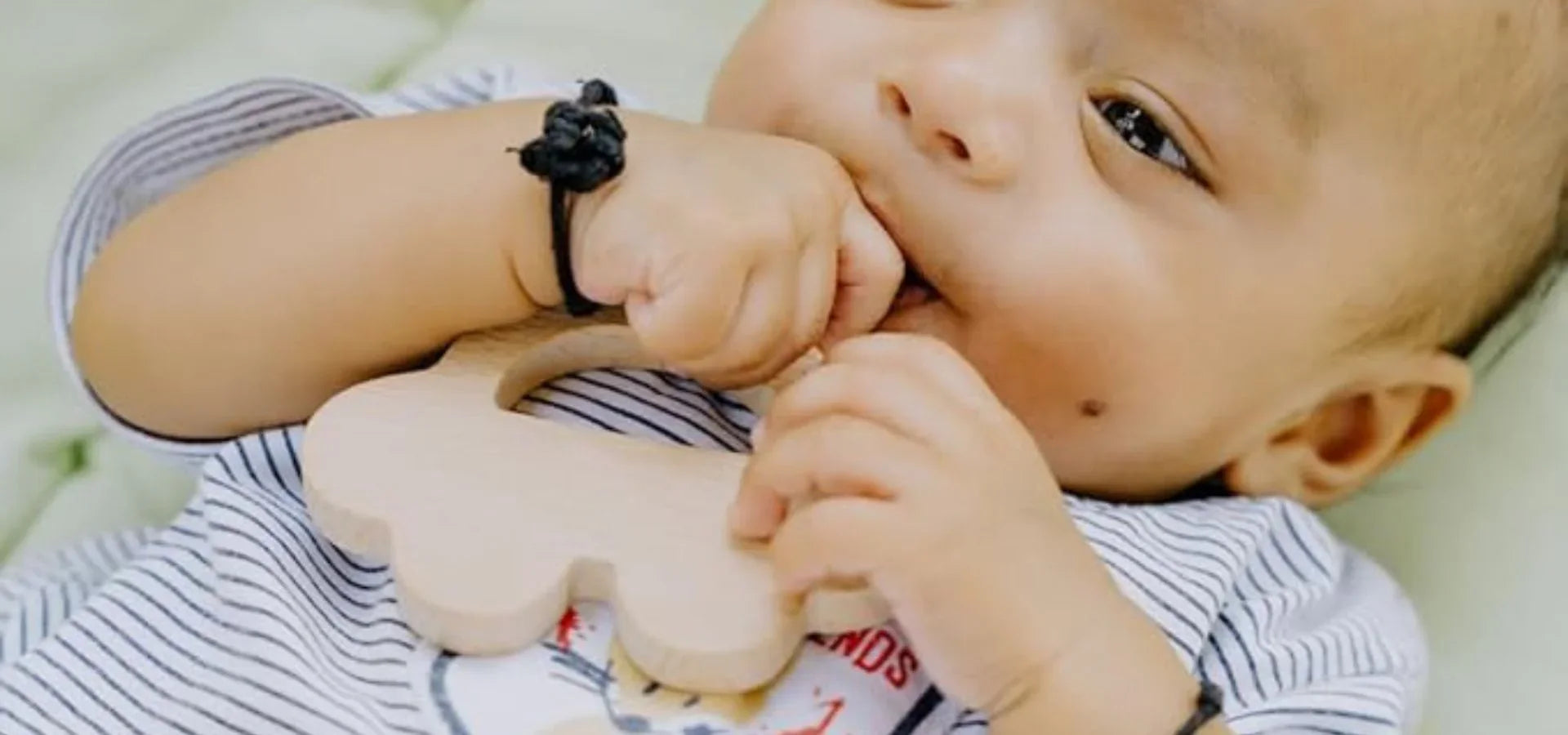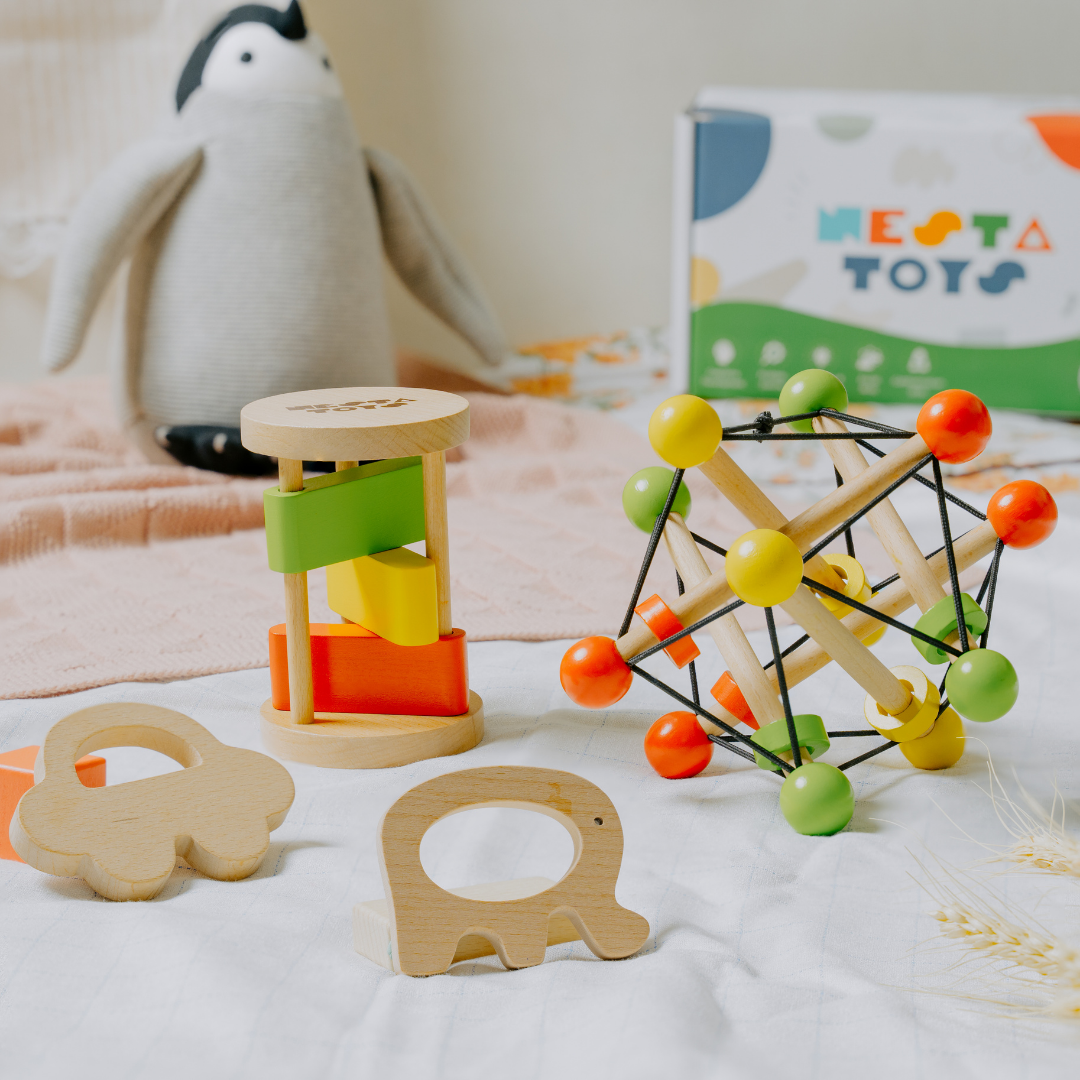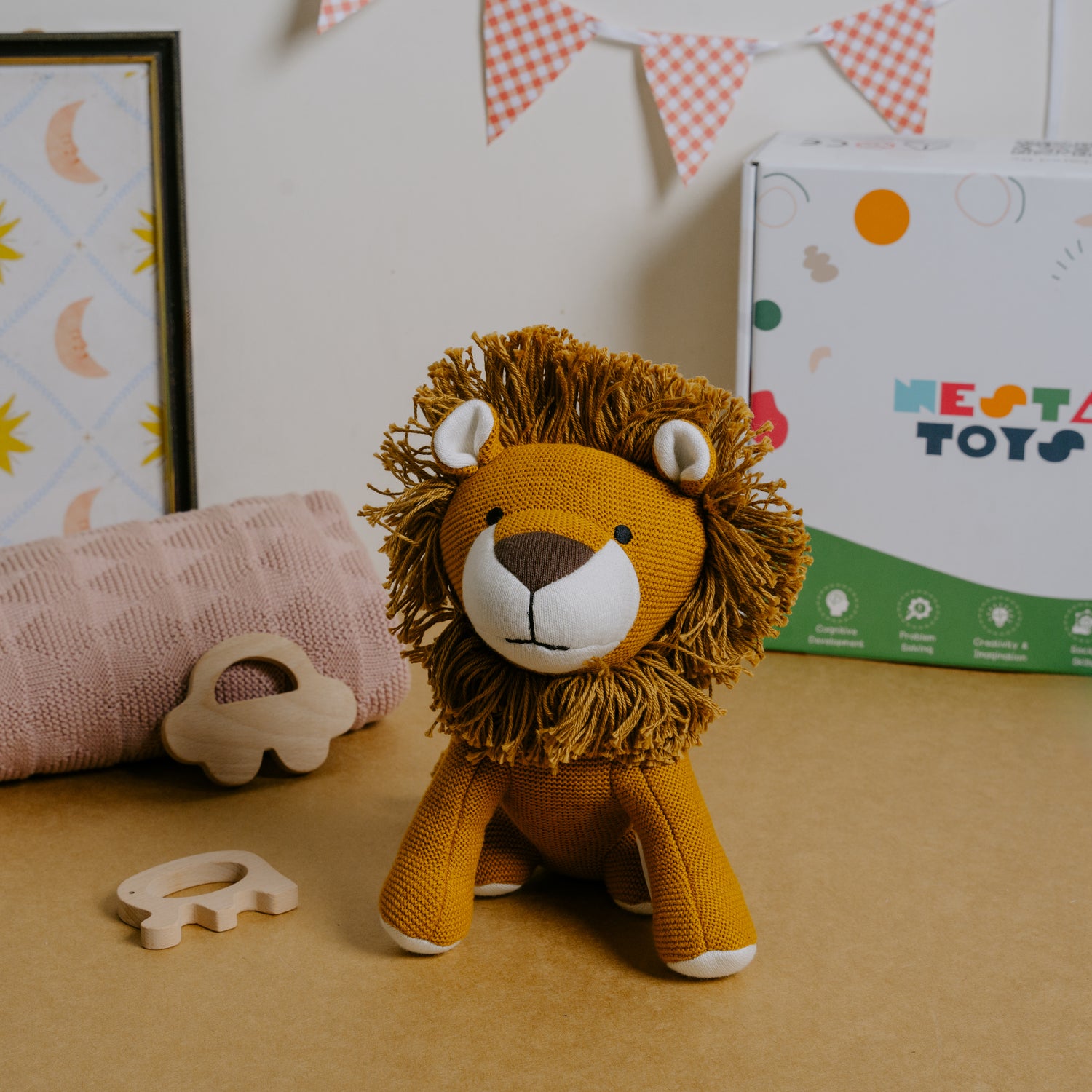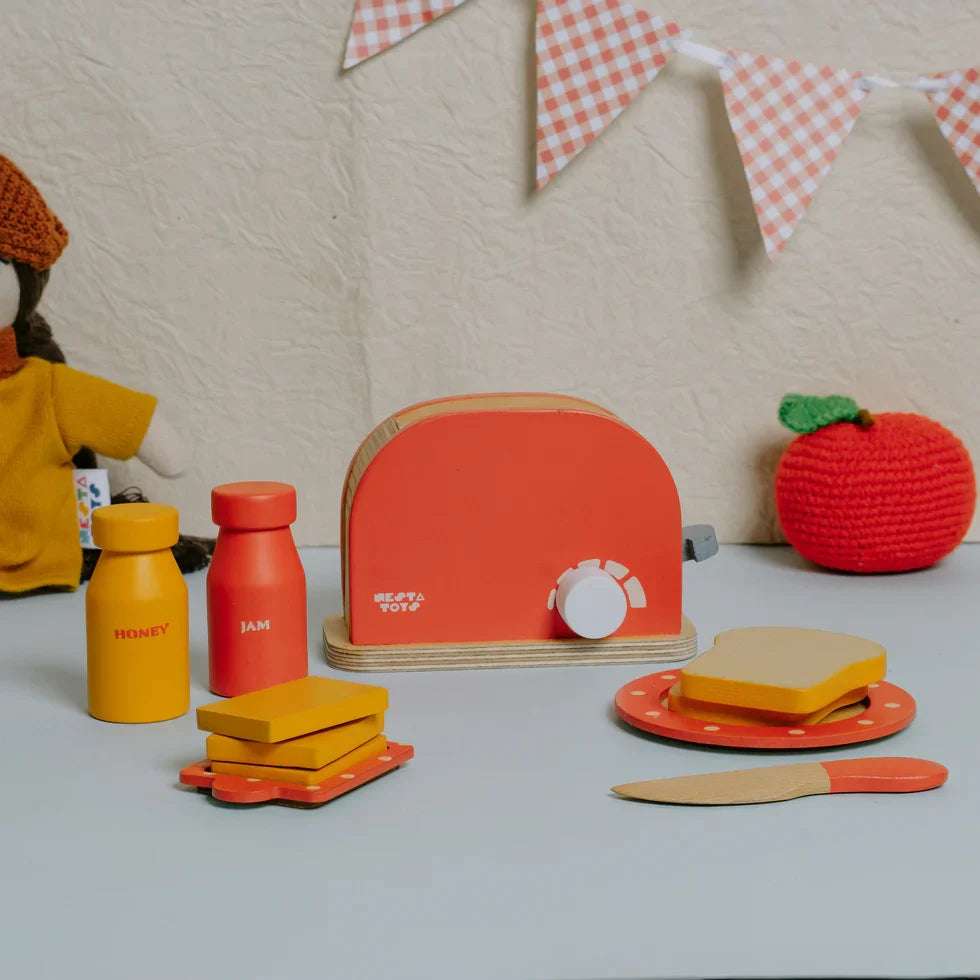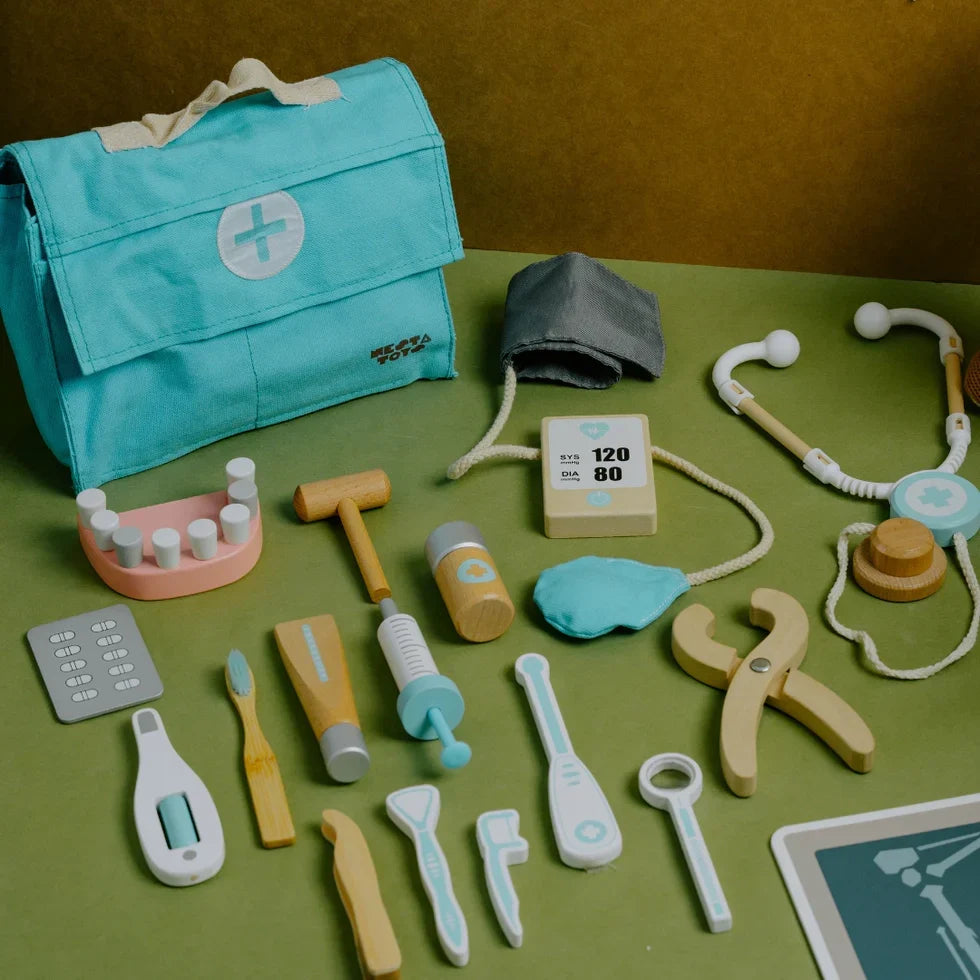For new parents, every little choice feels big—especially when it comes to toys. Toys aren’t just for play; they help shape your baby’s senses, motor skills, and curiosity from day one. The right toys can encourage healthy brain development, emotional comfort, and even early learning. But beyond the cute shapes and colors lies something even more important—the material. What your baby holds, chews, or snuggles matters. So, should you choose wooden, silicone, or plastic toys for your newborn? Let’s dive into what each material offers and how to choose what’s truly best.
How Safe Are These Toy Materials?
Your baby’s first toys don’t just get played with—they get chewed, sucked, and tossed around. That’s why safety is the most important factor for any newborn toy.
- Wooden toys made from natural, untreated or safely polished wood are among the safest options. When finished properly, they are smooth, splinter-free, and free from harmful chemicals. Many high-quality wooden toys also meet safety certifications like EN71 or ASTM, making them a top choice for eco-conscious and health-conscious parents.
- Silicone toys—especially those labeled as food-grade or medical-grade—are a fantastic choice for teething babies. They’re soft on gums, flexible, and completely non-toxic. These toys can usually withstand boiling, dishwashing, and regular sterilization, which adds to their hygiene safety.
- Plastic toys, while widely available and budget-friendly, come with more risks. If not explicitly labeled BPA-free or phthalate-free, they may contain harmful substances. Plus, plastic can crack over time, leading to sharp edges or small parts—both of which can pose a hazard to infants.
In short, while all three materials are commonly used in baby toys, wooden and silicone toys clearly stand out when it comes to health, hygiene, and safety for newborns.

Toys That Grow With Your Baby
When choosing toys for your newborn, durability is key—because babies grow fast, and their toys need to keep up. Wooden toys are known for lasting through years of play; they’re sturdy, don’t warp easily, and can handle bumps and drops without damage. Silicone toys are a close second—soft yet strong, they stretch, bend, and bounce back, making them perfect for teething and tactile play. Plastic toys, while affordable and widely available, often show signs of wear quickly. Cracks, fading, or breakage aren’t uncommon. For toys that truly grow with your baby, wooden and silicone options are smarter choices.
Eco-Friendly Toys: Building a Better Future One Block at a Time
Your baby's first toys don’t just teach—they leave an impact on the planet too.
- Wooden toys offer the most eco-friendly option. Made from renewable resources and crafted with minimal chemicals, they’re biodegradable and often heirloom-worthy.
- Silicone toys are not biodegradable, but their durability and safety make them a better choice than disposable plastic. Food-grade silicone is especially valued for its resilience in teething toys.
- Plastic toys, while widely available, have the highest environmental impact. Most are made from petroleum-based materials and are not biodegradable. Many end up in landfills or oceans, especially cheaper, short-lived ones.
Looking to build a green toy collection for your baby? Go with wood where possible, and use silicone where softness is key. Every eco-smart decision you make now adds up to a more sustainable future for your child.
Sensory Play: Which Toy Material Helps Babies Learn Best?
Sensory exploration begins early—and the right toy materials support healthy brain and motor development.
- Wooden toys provide a grounding experience with their natural textures and weight. Their simple, non-flashy design helps babies focus and explore calmly through touch and grasp.
- Silicone toys are ideal for oral and hand exploration. Soft, safe, and easy to grip, they’re especially beneficial during teething phases.
- Plastic toys may seem fun, but the bright lights, sounds, and artificial textures can sometimes overwhelm rather than stimulate.
Choosing the right material helps babies explore at their own pace. For nurturing play, natural wood and food-grade silicone offer safe, engaging experiences without sensory overload.

Keeping Toys Clean: Wood, Silicone, or Plastic?
Hygiene matters when your baby’s toys end up everywhere.
- Wooden toys just need a quick wipe with a damp cloth. They shouldn’t be soaked, as water can damage the finish or cause warping.
- Silicone toys are the easiest to clean. They’re water-friendly, sterilizable, and dishwasher-safe—perfect for everyday messes.
- Plastic toys wash easily but can develop tiny scratches that collect germs over time.
For best hygiene and less effort, silicone leads the way. Still, well-made wooden toys stay clean and safe with simple care.
Budget or Investment: What’s Worth It?
Choosing toys for babies means balancing cost and quality.
- Plastic toys are budget-friendly and widely available, making them great for quick buys or party favors.
- Silicone toys are mid-range—more durable and safer, especially for teething and mouthing.
- Wooden toys are a bigger investment. Their long-lasting build, natural materials, and aesthetic value make them worth the extra cost.
If you're looking for keepsakes or safer, more sustainable options, wooden toys are a smart long-term choice.
Smart Choices Start with Smart Parents
Today’s parents are prioritizing what truly matters—safety, sustainability, and long-term value. With growing awareness, there’s a visible shift toward non-toxic materials like wood and food-grade silicone. These materials not only support healthy development but also reduce environmental impact. Certifications such as BPA-free, EN71, and ASTM are now seen as essential—not optional—when picking toys for babies. Plastic, though cheap and common, is slowly taking a backseat as families choose safer, greener alternatives. Whether for gifting or daily play, choosing certified, eco-conscious toys is a smart decision that reflects thoughtful, modern parenting. Because trusted play begins with informed choices.
Conclusion
Wooden and silicone toys aren’t just a trend—they’re a return to what truly matters: safety, quality, and development. In the words of Dr. Stuart Brown, “Play shapes the brain, opens the imagination, and invigorates the soul.” So choose toys that spark that magic—naturally.


